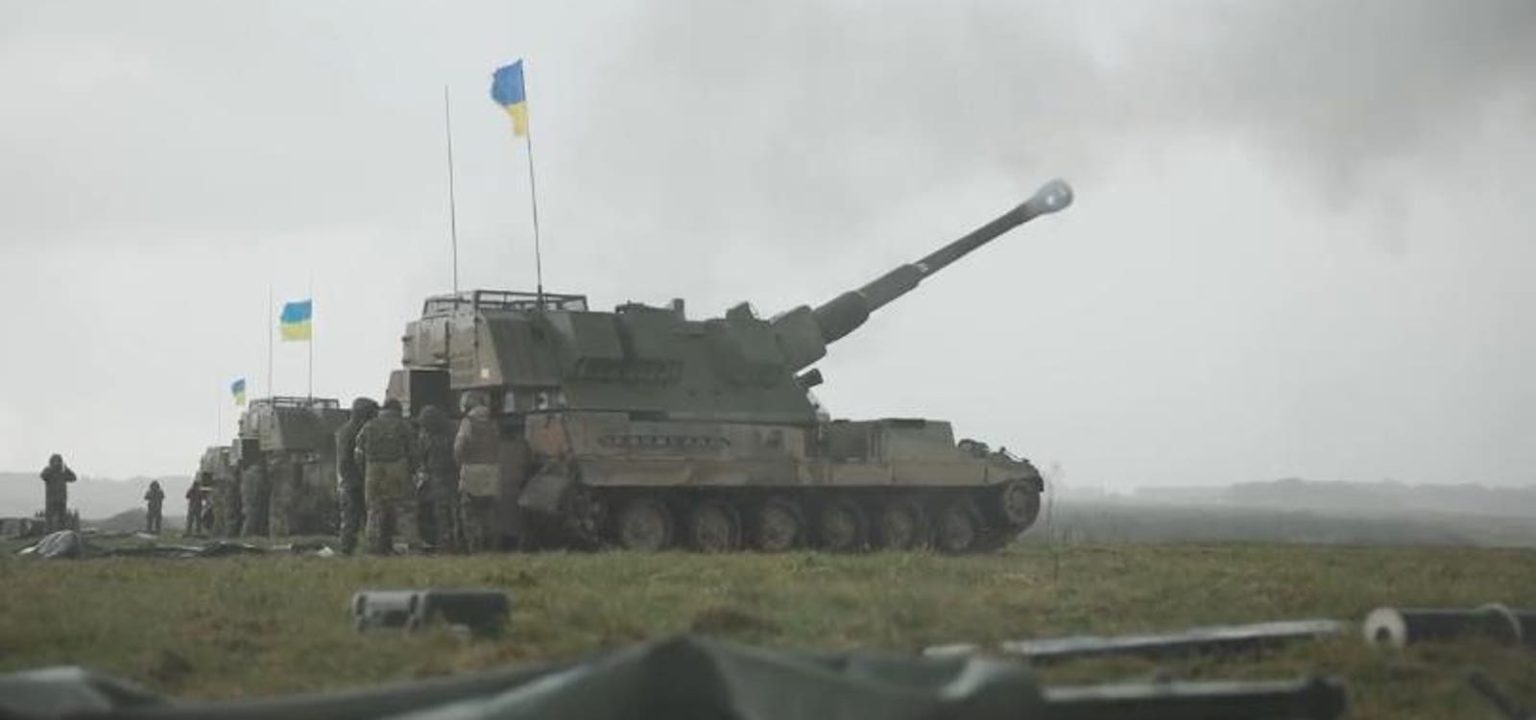The five crew of an entrenched Ukrainian AS-90 self-propelled howitzer might be the luckiest artillery crew members in Russia’s 28-month wider war on Ukraine. Somewhere along the 700-mile front line of the war recently, the tracked AS-90 was located by a Russian drone and came under relentless fire.
In a short period, the Russians attacked the 50-ton vehicle at least six times—damaging but not destroying it. That the crew may have survived is partly a matter of chance.
But it also underscores the importance of artillery fortifications in a war where the side with the most—and most durable—howitzers usually wins a battle.
The Russians circulated a drone video of the attack on the British-made AS-90—one of at least 50 the United Kingdom has pledged to Ukraine—on or before Wednesday.
After locating the 1990s-vintage AS-90 in its treeline hideout, presumably within 15 miles of the front line (the range of the AS-90’s 155-millimeter gun), the Russians attacked. First, they fired artillery at it. When the rounds failed to score a direct hit, they flung two explosive first-person-view drones at the howitzer.
As the smoke and dust cleared, the AS-90 was still mostly intact. More artillery rained down. And then a Lancet strike drone zoomed in. After six back-to-back attacks, the AS-90 was apparently badly damaged. But it didn’t explode and burn, meaning its crew had a chance to bail out and flee on foot.
There are thousands of artillery pieces on both sides of the Russia-Ukraine war, and every day some of them come under attack. The Russians went to war with around 5,000 big guns and rocket launchers and have lost around a third of them. The Ukrainians had fewer than 2,000 guns and launchers 28 months ago and have lost around 500, including at least seven AS-90s.
To replace losses, both sides have built new guns and launchers and pulled older systems out of long-term storage. Ukraine has also acquired hundreds of artillery pieces from its allies.
The intensity of the artillery fight has compelled gunners on both sides to find tactics that give them the best chance of surviving. If there’s an artillery consensus as the war grinds into its third year, it’s that drones are the biggest threat—and hiding from drones is the top priority.
It’s now standard practice for the crew of a Russian or Ukrainian howitzer to tuck their gun into a treeline, cover it with branches and camouflage netting and anti-drone screens and emerge from hiding just far enough, and long enough, to fire a few rounds before scurrying back under cover.
If the gunners relocate their weapon to a new firing position, they do it carefully—and only when they’re reasonably confident enemy drones aren’t watching.
The alternative to this entrenched approach to artillery warfare is a more mobile approach known as “shoot and scoot,” where a crew rolls up to a new firing position, shoots a few rounds then immediately speeds to a new position potentially miles away.
The theory behind shoot and scoot is that constantly moving can thwart enemy efforts to triangulate the source of incoming rounds—and shoot back.
Shoot and scoot might’ve worked back before the current era of nearly constant drone surveillance. But now that all modern armies watch the entire battlefield practically around the clock, hitting the road—especially during daytime—is virtually suicidal. It’s better to hunker down and ride out enemy bombardment.
Analyst Andrew Perpetua, who tallies vehicle losses in the Russia-Ukraine war, has long railed against the shoot and scoot philosophy. He cited the example of Ukraine’s German-made PzH 2000 howitzers, which were designed to be highly mobile but, in Ukraine, mostly stick to their disguised and fortified firing positions.
“I’ve seen a lot of people claim the PzH 2000 survives due to shoot and scoot in Ukraine,” Perpetua wrote. “But every video I have ever seen of PzH 2000—all of them, without exception—it wasn’t shooting and scooting. And, very frequently, the reason the PzH 2000 survived was because it wasn’t shooting and scooting.”
“Shoot and scoot” isn’t a thing, Perpetua insisted. He’d presumably argue that the embattled AS-90 would’ve taken more hits more quickly if its admittedly lucky crew had decided to break cover and make a run for it.
Sources:
1. B-AREV: https://x.com/trip_to_valkiri/status/1813567289494827092
2. Oryx:
3. Andrew Perpetua: https://x.com/AndrewPerpetua/status/1811571490774561211; https://x.com/AndrewPerpetua/status/1793536633066897438
Read the full article here





